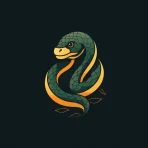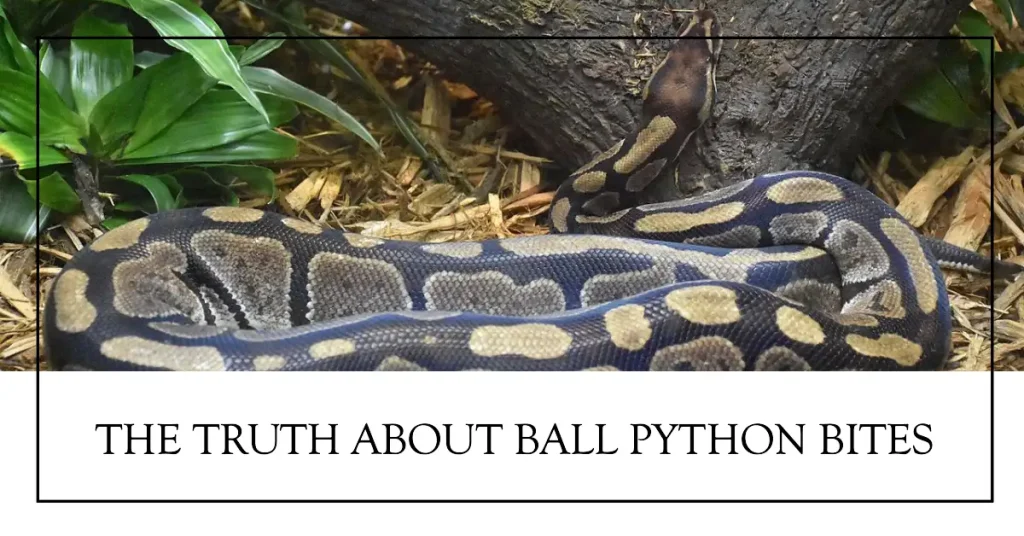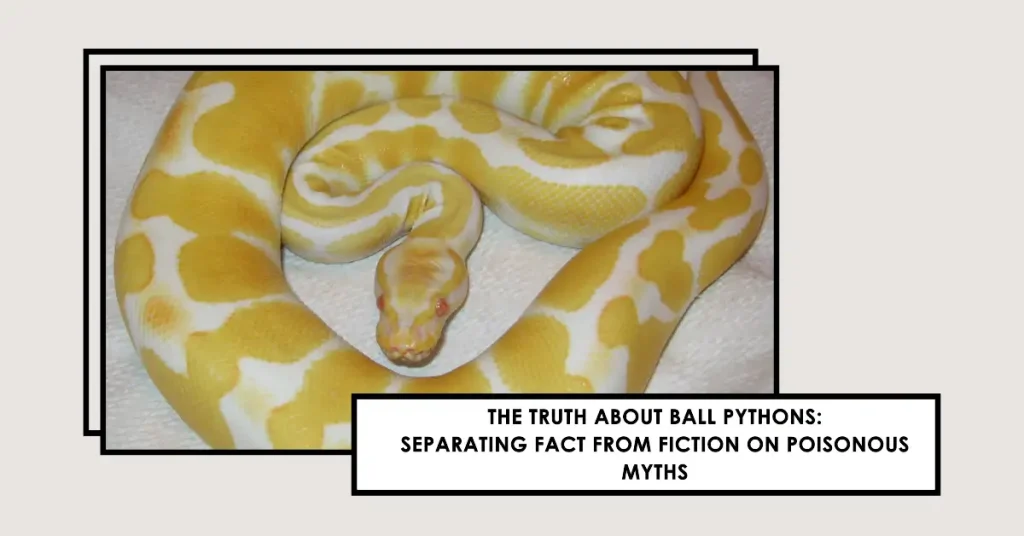Ball pythons do not strictly require UVB lighting to thrive, as they can metabolize calcium with a proper diet supplemented with vitamin D3. However, providing UVB lighting can benefit their overall well-being and natural behaviors, even though it’s not essential for their survival.
In the following paragraphs, we will discuss this topic in more detail…
I have encountered many reptile enthusiasts who are unsure whether their ball pythons require UVB lighting. The answer is while not strictly necessary, it is best to offer ball pythons a UVB light source. The importance of it in their overall health and well-being should not be underestimated. In this article, I will discuss the lighting requirements of ball pythons and provide essential care tips and guidelines for providing optimal UVB exposure.
Key Takeaways:
- Ball pythons benefit from UVB lighting for their overall health and well-being.
- UVB aids in the synthesis of vitamin D3, crucial for calcium metabolism and overall bone health in these reptiles.
- Choosing the appropriate UVB bulbs and setting up the lighting in the enclosure is crucial for optimal snake health.
Understanding Ball Python Lighting Requirements
Ball pythons require specific lighting conditions to maintain their physical and mental well-being. Lighting plays an essential role in regulating their biological processes, including digestion, metabolism, and immune system function.
One critical aspect of ball python lighting requirements is UVB radiation. In the wild, ball pythons bask in the sun to absorb UVB rays, which aid in vitamin D3 synthesis and calcium metabolism. In captivity, it’s essential to replicate these natural conditions as much as possible.
When choosing a UVB bulb for your ball python, it’s crucial to select a product specifically designed for reptiles. Regular fluorescent bulbs found in department stores do not provide the correct spectrum of light needed for reptilian health.
In addition to UVB exposure, ball pythons also require a day/night cycle. It’s best to use a timer to regulate lighting, where the enclosure receives 10-12 hours of light and 12-14 hours of darkness per day.
Overall, understanding the specific lighting requirements of ball pythons is crucial for their overall health and well-being. By replicating their natural environmental conditions as closely as possible, we can provide them with the best possible care.
| Condition | Specification | Notes |
|---|---|---|
| UVB Lighting | Not strictly necessary, but beneficial | UVB lighting can support natural behaviors and aid in vitamin D3 synthesis if included; however, it’s not essential with proper dietary vitamin D3 and calcium. |
| Type of UVB Bulb | Fluorescent tube or LED recommended | Choose bulbs designed for reptiles. Mercury vapor bulbs can also be used for larger enclosures or higher temperature needs. |
| Distance from Enclosure | 8-12 inches for fluorescent tubes, varies for LEDs based on manufacturer’s guidelines | Ensure the snake can get within this range without the risk of thermal injury. |
| Duration of Exposure | 10-12 hours per day for UVB, if used | Mimic natural daylight hours. Adjust seasonally if desired for a more natural environment. |
| Temperature Gradient | Basking spot: 88-92°F (31-33°C), Cool side: 75-80°F (24-27°C) | Essential for thermoregulation. Use a reliable thermometer to monitor these zones. |
| Day/Night Cycle | 10-12 hours of light, 12-14 hours of darkness | Use a timer to regulate light cycles, ensuring a consistent pattern that mimics natural conditions. |
| Humidity | 50-60%, with spikes to 70% during shedding | Use hygrometers to monitor. Proper humidity is crucial for skin health and successful shedding. |
| Ambient Light | Provide during daylight hours | Even without UVB, ambient light helps regulate the snake’s circadian rhythm. Natural light from windows or standard room lighting can suffice, but avoid direct sun. |
This table serves as a guideline for creating an environment that supports both the physical and mental well-being of ball pythons. Regular monitoring and adjustments may be necessary to tailor the conditions to your specific snake and its environment, ensuring it remains healthy and content.
The Importance of UVB for Ball Pythons
While UVB lighting can offer significant benefits for ball pythons, including promoting natural behaviors and aiding in vitamin D3 synthesis, it’s important to note that with proper dietary management, including calcium supplementation and vitamin D3, ball pythons can maintain healthy calcium metabolism even without direct UVB exposure. Thus, while beneficial for mimicking natural sunlight and potentially enhancing well-being, UVB lighting is not an absolute requirement for the survival of ball pythons in captivity.
While adequate UVB exposure is crucial for preventing metabolic bone disease by supporting vitamin D3 synthesis, it is equally important to avoid overexposure, which can lead to potential skin and eye damage in reptiles. A balanced approach to UVB lighting—ensuring your ball python receives beneficial UVB rays without excessive exposure—is essential for maintaining their health and well-being.
Selecting the Right UVB Bulbs for Your Ball Python
When it comes to selecting the right UVB bulbs for your ball python, there are a few factors to consider. First and foremost, it’s important to choose a UVB bulb that is appropriate for the size of your enclosure. This will ensure that your ball python receives the proper amount of UVB exposure.
There are two main types of UVB bulbs: fluorescent and mercury vapor. Fluorescent bulbs are the most common type of UVB bulb and are suitable for most ball python enclosures. Mercury vapor bulbs, on the other hand, are more powerful and emit both UVB and heat. They are a good option for larger enclosures or for ball pythons that require higher temperatures.
In addition to fluorescent and mercury vapor bulbs, LED UVB lighting is emerging as an energy-efficient option with a longer lifespan. LED UVB lights can provide a consistent UVB output over time, making them a cost-effective and environmentally friendly choice for reptile enclosures. When selecting UVB lighting, consider LED options alongside fluorescent and mercury vapor bulbs to determine the best fit for your enclosure and your ball python’s needs.
It’s important to note that not all UVB bulbs are created equal. Some brands may have higher or lower UVB output than others. When selecting a bulb, be sure to check the UVB output rating on the packaging. A UVB meter can also be used to measure the actual output of the bulb.
In addition to selecting the right type of bulb, it’s also important to replace these bulbs regularly. Over time, the UVB output of the bulb will decrease, even if it appears to be working. As a general rule, it’s recommended to replace UVB bulbs every 6-12 months, depending on the manufacturer’s recommendations.
To ensure your ball python receives the appropriate amount of UVB throughout the bulb’s lifespan, it’s advisable to regularly measure UVB levels using a UVB meter. This practice helps to confirm that the bulb continues to emit adequate UVB radiation, as UVB output can decrease even if the bulb has not burned out. Replacing UVB bulbs as recommended by the manufacturer, or based on UVB meter readings, will help maintain optimal UVB exposure levels in your ball python’s enclosure.
Setting Up UVB Lighting in the Ball Python Enclosure
Proper setup of UVB lighting is important. Here are step-by-step instructions on how to set up UVB lighting in your ball python’s enclosure:
- Choose the right bulb: Select a UVB bulb that is appropriate for the size of your enclosure and emits a proper UVB spectrum. A linear bulb is usually recommended for larger enclosures, while a compact bulb can be used for smaller enclosures. Make sure to check the bulb’s specifications to ensure it is suitable for ball pythons.
- Install the bulb: Place the bulb in a reflector dome fixture and mount it in the enclosure. It is recommended to position the fixture over a basking spot or a perch where the snake can access the light.
- Adjust the distance: The distance between the bulb and the snake should be appropriate to ensure they receive the proper amount of UVB. Follow the manufacturer’s instructions and make sure to monitor the temperature and UVB levels regularly.
- Set a lighting schedule: Ball pythons require a day/night cycle to maintain their circadian rhythm. Provide 10-12 hours of UVB exposure per day. You can use a timer to regulate the lighting schedule and ensure consistent exposure.
Remember that UVB lighting should not be the only source of light in the enclosure. Ball pythons also require a heat source and ambient light to maintain proper health.
Providing UVB for Ball Pythons: Best Practices
When setting up UVB lighting for ball pythons, there are several best practices to keep in mind to ensure optimal health and well-being for your pet.
First and foremost, it’s important to choose the right type of UVB bulb for your enclosure. As previously mentioned, linear fluorescent bulbs are a popular option for ball pythons, but compact fluorescent bulbs and mercury vapor bulbs can also be effective. Make sure to choose a bulb that provides the appropriate level of UVB for your specific enclosure size and the needs of your snake.
When setting up the lighting in your snake’s enclosure, it’s important to position the bulb in the correct location. UVB bulbs should be placed on the top of the enclosure, with a distance of approximately 8-12 inches between the bulb and the basking spot. This ensures that your snake receives adequate UVB exposure without the risk of overheating.
It’s also essential to provide a proper lighting schedule for your ball python. This includes providing a consistent photoperiod of 10-12 hours of light per day, with the UVB bulb turned on for a portion of this time. It’s best to consult with a veterinarian or reptile expert to determine the ideal lighting schedule for your specific snake and enclosure.
In addition to following these best practices, it’s important to regularly monitor your ball python’s behavior and health to ensure that they are receiving adequate UVB exposure. Signs of potential UVB deficiencies or excesses may include lethargy, decreased appetite, or abnormal shedding. If you notice any of these symptoms, it’s important to adjust the lighting schedule or seek veterinary care as needed.
Overall, providing UVB lighting for your ball python is an important aspect of their care. By following these best practices, you can ensure that your snake receives the appropriate level of UVB exposure to maintain their overall health and well-being.
Common Mistakes to Avoid with UVB Lighting for Ball Pythons
As important as providing UVB lighting is for ball pythons, there are a few common mistakes that owners make when setting up their snake’s lighting that could have negative effects. Here are some mistakes to avoid:
- Choosing the wrong bulb: Not all UVB bulbs are created equal, and it’s important to choose a bulb that is appropriate for the size of your enclosure and the specific needs of your ball python. Make sure to do your research and choose a bulb that is appropriate for your setup.
- Placing the bulb too far away: If the UVB bulb is too far away from your ball python, they may not be receiving the proper amount of UVB radiation. Make sure to follow the manufacturer’s guidelines for the appropriate distance between the bulb and your snake.
- Leaving the light on for too long: While it’s important to provide enough UVB for your ball python, it’s also important not to overdo it. Leaving the light on for too long can cause excess UVB exposure, which can lead to health problems. Make sure to follow the recommended lighting schedule for your specific bulb.
- Not replacing the bulb regularly: UVB bulbs do not last forever, and over time, they will lose their effectiveness. It’s important to replace your UVB bulb according to the manufacturer’s recommendations to ensure your ball python is receiving the proper amount of UVB radiation.
- Not monitoring your snake’s behavior: Your ball python’s behavior can be a good indicator of whether or not they are receiving enough UVB. If you notice a change in their activity level, appetite, or overall behavior, it could be a sign that they are not getting enough UVB radiation.
By avoiding these common mistakes and following the guidelines for providing UVB lighting for your ball python, you can help ensure that they are happy and healthy in their enclosure.
The Importance of UVB for Ball Pythons
As mentioned earlier, UVB plays a crucial role in the synthesis of vitamin D3, which is essential for calcium metabolism and overall bone health in ball pythons. Without adequate UVB exposure, these reptiles may develop metabolic bone disease, which can lead to weakened bones, deformities, and other health issues.
It is important to note that UVB is not a substitute for a balanced diet or proper husbandry practices. However, providing adequate UVB lighting can greatly enhance the health and well-being of ball pythons in captivity.
As ball python owners, it is our responsibility to ensure that our pets receive adequate UVB exposure. This means selecting the appropriate UVB bulbs for my enclosure, setting them up correctly, and monitoring their use to avoid any potential issues.
Other Factors for Optimal Ball Python Care
While UVB lighting is an essential component of ball python care, there are other factors that owners must consider to ensure the overall health and well-being of their pet.
Temperature is critical, as ball pythons require specific ranges for both their warm and cool zones. A basking spot around 88-92 degrees Fahrenheit and a cool zone between 78-80 degrees Fahrenheit are ideal. A temperature gradient allows for proper thermoregulation, which is crucial for digestion and overall health.
Humidity is another important factor to monitor in a ball python’s enclosure. The recommended range is between 50-60%, with occasional spikes to 70% during shedding periods. Humidity levels that are too low or too high can lead to health issues like dehydration or respiratory infections.
Proper diet is also crucial for ball python health. These snakes are carnivores and require a diet of appropriately-sized rodents. Owners must ensure the prey is of adequate size, as feeding prey that is too large can lead to regurgitation and other digestive issues.
Ensuring a clean and safe environment for the snake is essential. Regular enclosure cleanings, correct substrate, and proper hiding spots are necessary for their health and well-being.
Providing optimal care for ball pythons involves more than just proper UVB lighting; it requires a holistic approach that includes appropriate temperature gradients, humidity levels, diet, and enclosure cleanliness. Each of these elements plays a vital role in the health and well-being of ball pythons, and their care should be managed in an integrated manner. By maintaining a balanced environment that closely replicates their natural habitat, you can ensure the health, happiness, and longevity of your ball python.
Do Ball Pythons Need UVB – Conclusion
Providing proper care for your ball python is crucial for their well-being, and UVB lighting plays a significant role in their overall health. Throughout this article, we’ve explored the importance of UVB lighting for ball pythons, the specific lighting requirements, and how to select and set up the appropriate UVB bulbs. We’ve also discussed best practices, potential mistakes to avoid, and how UVB lighting can be used as a tool to monitor the health of your snake.
It’s essential to remember that UVB is just one aspect of providing optimal care for your ball python. Temperature, humidity, diet, and other factors also play a significant role. However, prioritizing UVB lighting in your snake’s enclosure should not be overlooked.
By following the guidelines and best practices outlined in this article, you can ensure that your ball python is receiving the necessary UVB exposure for their overall health and well-being. An investment in proper UVB lighting for your snake is an investment in their ongoing health and quality of life.
FAQ
Q: Do ball pythons need UVB?
A: Yes, UVB lighting is essential for the overall health and well-being of ball pythons.
Q: What are the lighting requirements for ball pythons?
A: Ball pythons require specific lighting, including UVB, to mimic their natural habitat and promote optimal health in captivity.
Q: Why is UVB important for ball pythons?
A: UVB aids in the synthesis of vitamin D3, which is crucial for calcium metabolism and overall bone health in ball pythons.
Q: How do I select the right UVB bulbs for my ball python?
A: When choosing UVB bulbs for your ball python enclosure, consider different types available in the market and their recommended specifications.
Q: How do I set up UVB lighting in the ball python enclosure?
A: Follow these step-by-step instructions to properly set up UVB lighting in the ball python enclosure, including ideal placement, distance, and duration of exposure.
Q: What are the best practices for providing UVB for ball pythons?
A: Ensure proper enclosure design, lighting schedules, and take necessary precautions to provide optimal UVB exposure for ball pythons.
Q: What are common mistakes to avoid with UVB lighting for ball pythons?
A: Learn about common mistakes and misconceptions when it comes to UVB lighting for ball pythons, and get tips on how to avoid them.
Q: How can UVB lighting help monitor ball python health?
A: UVB lighting can be used as a tool to monitor ball python health, as certain signs may indicate deficiencies or excesses that require adjustments to the lighting setup.



